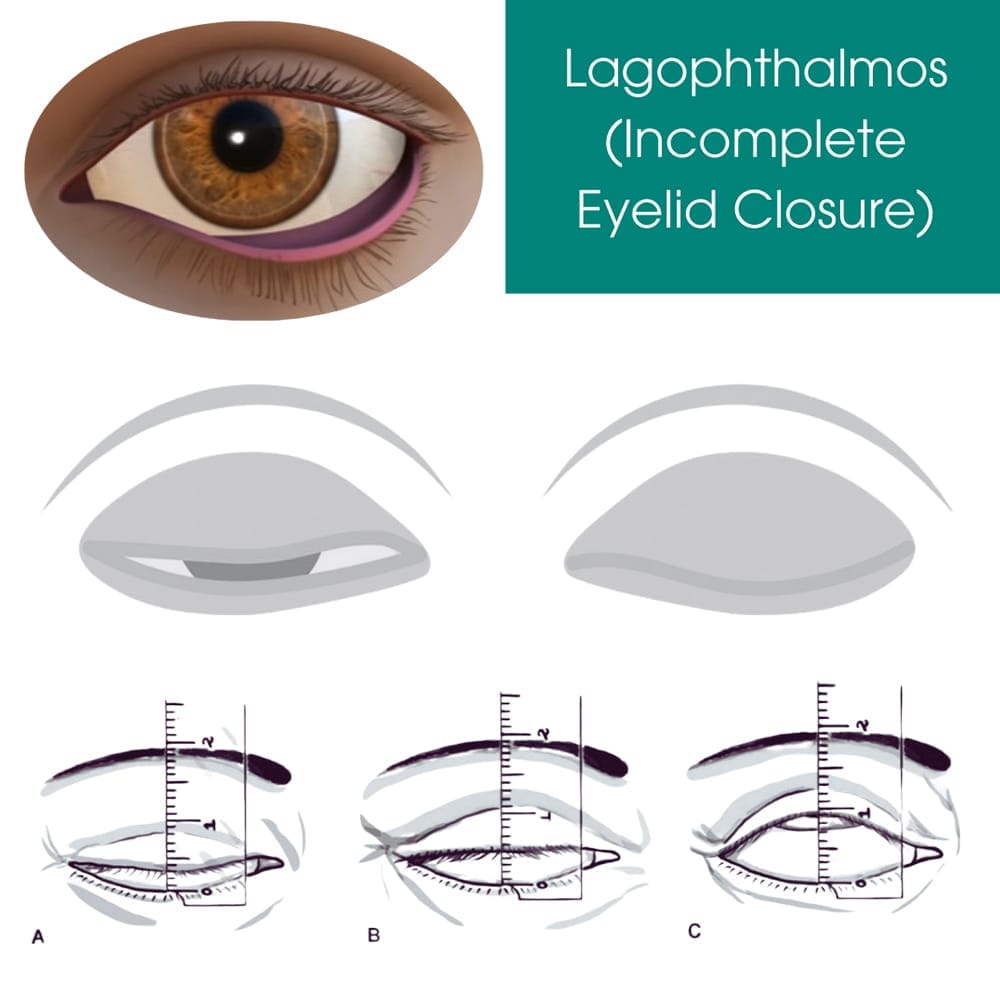Lagophthalmos is a medical condition characterized by the inability to close the eyelids completely, leaving a piece of the eye visible. While not as well-known as some other eye diseases, it’s a serious worry for people who suffer from it. Left untreated, incomplete eye closure leads to dry eyes, discomfort and infections. It happens for a variety of causes, including nerve disorders and eye traumas.
Lagophthalmos is divided into various types, including:
If you have lagophthalmos and other symptoms such as dryness or irritation, you should get medical attention and treatment for lagophthalmos from an experienced doctor as soon as possible. Eye Physicians in NYC is a renowned practice with a diverse staff of optometrists and eye doctors who specialize in treating a variety of eye diseases, including treatment for lagophthalmos. Their timely and competent care offers the best possible maintenance of your eye health.
They also offer solutions such as:

A person with lagophthalmos has trouble fully closing their eyes, resulting in a gap between the upper and lower eyelids. This often happens only at night in a state called nocturnal lagophthalmos. The incomplete closing of the eyes is also common when you blink.
Other common symptoms of incomplete eye closure include:
Constant corneal exposure can lead to abrasions, ulcers and blindness. Dry eye syndrome worsens due to insufficient tear lubrication. Infections become increasingly common, posing a risk to eye health. In addition, cosmetic issues and functional impairments develop, interfering with daily life.
There’s usually some kind of underlying condition that causes your eyelids to remain open. The condition may be the result of poor surgical outcomes, trauma to your face or defect at birth.
Several factors can cause lagophthalmos, including:
Incomplete eyelid closure when you’re sleeping leads to repeated exposure to air and debris and reduces eyelid elasticity, resulting in chronic lagophthalmos even when awake.
Your NYC physician who knows how to treat nocturnal lagophthalmos can make an effective nocturnal lagophthalmos treatment plan for you that may include:
The treatment of lagophthalmos is established based on its underlying cause and severity. For example, once you receive treatment for a thyroid disorder, your eyes return to their normal size and your lids close properly. When a growth on the eyelid is removed, the incomplete eyelid closer resolves itself naturally.
Other lagophthalmos treatment options your Downtown Manhattan eye doctor may recommend are things you can do on your own. Some require additional office visits.
Options for how to treat nocturnal lagophthalmos and daytime improper eyelid closure may include:
Lagophthalmos is normally diagnosed after a comprehensive eye examination by an ophthalmologist. Your doctor evaluates your ability to fully close your eyelids by having you close your eyes softly as he observes any gaps. Procedures like the snap test, which evaluates eyelid closure force, are used to assess the severity of the illness.
Preventing lagophthalmos involves addressing underlying causes and taking preventative steps, such as:
Don’t let lagophthalmos compromise your eye health and comfort. Contact the trained doctors at Eye Physicians in New York City for complete treatment and comfort. The prognosis for lagophthalmos varies depending on the root cause and severity of the disease and how long you’ve waited to get treatment. Lagophthalmos treatment improves eyelid function and relieves symptoms with proper management. Early detection and timely intervention by an experienced doctor significantly enhance results for people with lagophthalmos.
Eye Physicians
110 Lafayette St, Suite 503
New York, NY 10013
(212) 292-4814
Entrust the care of your precious eyesight to highly skilled and experienced eye care professionals. For top-notch ophthalmologists and optometrists in Downtown Manhattan, choose Eye Physicians. Eye Physicians ensures prompt care, precise diagnosis, and personalized treatment plans.
Schedule an Appointment